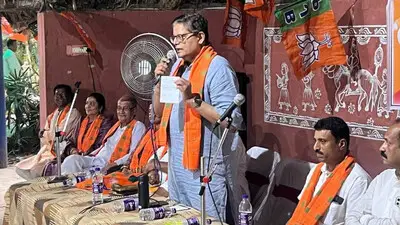Recommended Stories
The figures might further increase as the counting of estuarine nest is still on, Manoj Kumar Mahapatra, Divisional Forest Officer, Rajnagar Mangrove (wildlife) Forest Division, said. Last year, 57 nesting sites had been spotted, forest officials said. Female crocodiles lay 50 to 60 eggs and the hatchlings usually emerge from the nests 70 to 80 days after incubation period. An estimated 700 crocodile hatchlings were sighted last year.
Forest department sources said due care was taken this time by wildlife staff so that crocodiles` eggs were not devoured by predators like snakes, jackals and dogs, found in the reserve. The number of salt water crocodiles, the species which are not found in any other river system in Odisha, stands at 1654 as per the latest census in the sanctuary.
The wildlife sanctuary has remained out of bounds for tourists and visitors to ensure disturbance-free annual nesting of crocs. Besides the animals turn violent and restive over human interference in their habitat.
The restriction on entry to sanctuary was clamped on May 31 and it would be lifted on July 31, the officials said. "The population increase of these species has been at a snail`s pace," the DFO said.
The internationally acclaimed Bhitarkanika Ramsar wetland site continues to be the congenial habitat of salt-water crocodiles with the swampy mangrove region housing the largest number of these reptiles.
The region is crisscrossed by innumerable water inlets, creeks and nullahs all forming part of Bhitarkanika river system. It?s a record as nowhere in the country these species is spotted in such abundance, he claimed.
Wildlife researchers studying salt water crocodiles are of the view that habitat of these species is getting squeezed in about 26 square kilo metre of water bodies within the national park. These reptiles prefer the ideal water bodies because of its salinity content.
The salinity level in some of the water bodies might be dropping proving to be less ideal for crocodiles. Wildlife researchers say it should be intensely studied to ascertain whether desalinised water has anything to do with reproductivity of these sensitive species.












